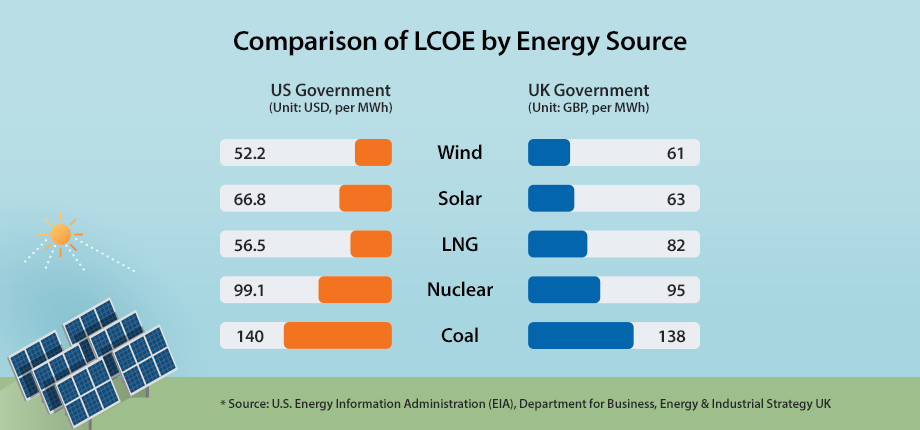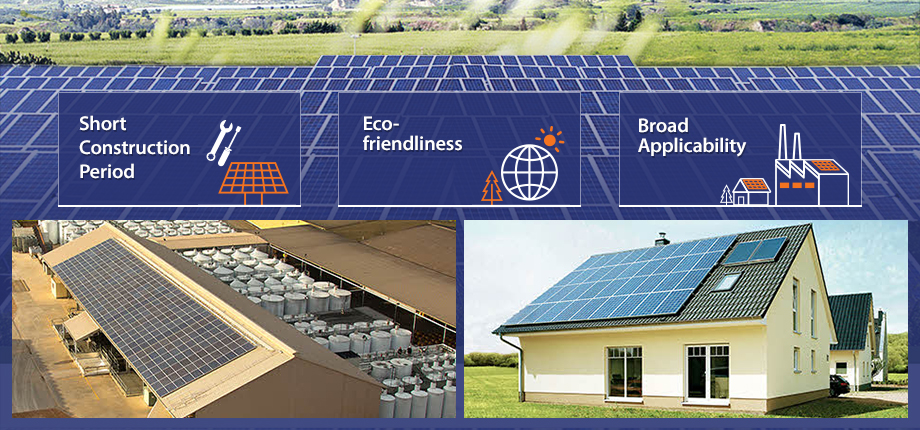What’s Behind All the Buzz on Solar Energy?
Ahmed Zaki Yamani served 25 years as the Minister of Oil and Mineral Resources of Saudi Arabia and has also chaired OPEC’s Long-Term Strategy Committee. Back in 2000, he famously predicted that in 30 years, there would be “a huge amount of oil – and no buyers” because technological advances were creating new, cheaper, and viable substitutes for oil.
Today, we are seeing his predictions come true in the global energy market. Solar energy is quickly becoming the most promising next-generation source of energy. In some regions, solar energy has already overtaken fossil fuels because it has a low cost of entry and is environmentally-friendly.
Let us take a look at why the energy world is abuzz with the talk of solar energy.
Lower Installation Costs

The price of photovoltaic modules, which account for about half of the cost of building a solar power plant, dropped 99% in the past 40 years from $76.67/Wp in 1977 to only a fraction of the cost at $0.74/Wp in 2013. The drop in price corresponded with a dramatic increase in the number of new installations of solar energy facilities around the world, with the cumulative installation volume rising 180-fold in the past fifteen years.
Saving Maintenance Costs
The appeal of solar energy and its increasing adoption across the global energy market is also due to low cost of maintenance. There is only a small number of moving parts in a photovoltaic system and this equates to lower running and maintenance costs than fossil fuel plants operating over the same period of time. Unlike traditional fossil fuels such as coal, natural gas and petroleum, solar energy uses sunlight as its fuel to generate power, making its raw material costs, effectively zero.

The energy industry uses a concept called ‘Levelized Cost of Energy’ (LCOE) to calculate the present value of a system’s lifetime costs by combining all costs that go into the development, construction and operation of different energy generation systems.
According to the United Nations Environment Program (UNEP), the LCOE of solar PV energy dropped by 17 percent between 2015 and 2016. And the statistics released by both the U.S. and the UK government confirm that the LCOE of solar energy is already at a level far lower than that of other energy sources in advanced markets.
Sustaining Energy and Great Growth Potential

Besides being cost effective, solar energy has a myriad of benefits and great potential for growth. Relative to other sources of energy, it takes considerably less time to install the solar panels that can generate 3 kW for a small household to a massive 500 MW at a 1 GW plant. Construction of these environmentally-friendly plants take much less time too and with the current ability to accurately predict sunlight, barriers to entry are low and the incentives high. These benefits combined with the eager support from national and regional governments are making solar energy tomorrow’s highest growth-potential power source.
According to the CFO of Hanwha Q CELLS Seo Jung-pyo, increasing public awareness of global climate change is expected to further fuel the demand for solar energy. And solar energy with its virtually limitless potential for growth will continue to play a pivotal role in the future development of the new and renewable energy industry with its eco-friendly and affordable energy production.
Get the latest news about Hanwha, right in your inbox.
Fields marked with * are mandatory.
- Non-employee
- Employee




